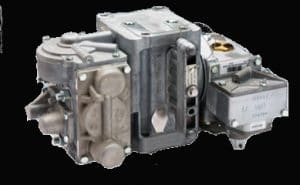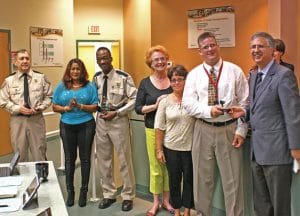Retirees, and those planning retirement, should be aware of the Railroad Retirement laws and rules governing benefit payments to annuitants who work after retirement.
The following questions and answers describe these Railroad Retirement work restrictions and earnings limitations on post-retirement employment, and how these rules can affect retirees engaging in self-employment.
Although the Railroad Retirement Board (RRB) participates in information exchanges with other federal agencies to identify unreported work and earnings to protect the integrity of its programs, annuitants are obligated to report post-retirement work and earnings. It is important to note that if annuitants fail to report post-retirement work and earnings, the Board may assess overpayments and fines. In some circumstances, law enforcement may consider the annuitant to have committed fraud subject to criminal and civil penalties.
1. What are the basic Railroad Retirement work restrictions and earnings limitations that apply to post-retirement work?
Neither a regular Railroad Retirement annuity (whether based on age and service or on disability) nor a supplemental annuity is payable for any month in which a retired or disabled employee, regardless of age, works for an employer covered under the Railroad Retirement Act. This includes work for labor organizations. This is true even if the retired or disabled employee performed service for one day during the month, and includes local lodge compensation totaling $25 or more for any calendar month. Regardless of the amount of salary, work by a local lodge or division secretary collecting insurance premiums is always considered railroad work and, therefore, no annuity is payable for any month in which such activity occurs.
No spouse annuity is payable in any month in which the employee’s annuity is not payable, or for any month the spouse, regardless of age, works for an employer covered under the Railroad Retirement Act. A divorced spouse annuity is not payable for any month in which the divorced spouse, regardless of age, works for an employer covered under the Railroad Retirement Act. A divorced spouse can receive an annuity even if the employee has not retired, provided they have been divorced for at least 2 years, the employee and divorced spouse are at least age 62, and the employee is fully insured under the Social Security Act using combined railroad and social security earnings. A survivor annuity is not payable for any month the survivor works for an employer covered under the Railroad Retirement Act, regardless of the survivor’s age.
Also, like Social Security benefits, Railroad Retirement Tier I benefits paid to employees, spouses and divorced spouses, and Tier I and Tier II benefits paid to survivors, are subject to deductions if an annuitant’s earnings exceed certain exempt amounts. These earnings deductions do not apply to those who have attained full Social Security retirement age.
Full retirement age for employees and spouses is age 66 for those born from 1943 through 1954 and gradually increases to age 67 for those born in 1960 or later. Full retirement age for survivor annuitants ranges from age 66 for those born from 1945 through 1956 to age 67 for those born in 1962 or later.
Deductions for all annuitants, however, remain in effect for the months before the month of full retirement age during the calendar year of attainment. (The attainment of full retirement age does not mean an annuitant can return to work for an employer covered under the Railroad Retirement Act. As explained above, no annuity is payable for any month in which the annuitant works for a railroad employer, regardless of the annuitant’s age).
Additional deductions are assessed for retired employees and spouses who work for their last pre-retirement non-railroad employer (see Question 3). Also, special restrictions apply to disability annuitants (see Questions 5 and 6).
2. What are the current exempt earnings amounts for those non-disability annuitants subject to earnings limitations?
For those under full retirement age throughout 2020, the exempt earnings amount rises to $18,240 from $17,640 in 2019. For beneficiaries attaining full retirement age in 2020, the exempt earnings amount rises to $48,600 from $46,920 in 2019 for the months before the month full retirement age is attained.
For those under full retirement age throughout the year, the earnings deduction is $1 in benefits for every $2 of earnings over the exempt amount. For those attaining full retirement age in 2020, the deduction is $1 for every $3 of earnings over the exempt amount in the months before the month full retirement age is attained.
Earnings received for services rendered, plus any net earnings from self-employment, are considered when assessing deductions for earnings. Interest, dividends, certain rental income or income from stocks, bonds, or other investments are not generally considered earnings for this purpose.
3. What are the additional deductions applied to the annuities of retired employees and spouses working for their last pre-retirement non-railroad employer?
Retired employees and spouses, regardless of age, who work for their last pre-retirement non-railroad employer are also subject to an earnings deduction in their Tier II and Railroad Retirement supplemental annuity benefits, if applicable, of $1 for every $2 in earnings up to a maximum reduction of 50 percent. The deductions in the Tier II benefits and supplemental annuities of individuals who work for pre-retirement non-railroad employers apply even if earnings do not exceed the Tier I exempt earnings limits. Also, while Tier I earnings deductions stop when an annuitant attains full retirement age, these Tier II and supplemental annuity deductions continue to apply after the attainment of full retirement age. Work that begins on the same day as the annuity beginning date is not last pre-retirement non-railroad employment.
4. Can a retired employee’s earnings also reduce a spouse’s benefit?
A spouse benefit is subject to reductions not only for the spouse’s earnings, but also for the earnings of the employee, regardless of whether the earnings are from service for the last pre-retirement non-railroad employer or other post-retirement employment. An annuity paid to a divorced spouse may continue despite the employee’s work activity. However, the employee’s non-railroad earnings over the annual earnings exempt amount may reduce a divorced spouse benefit.
5. How do post-retirement work activity and earnings affect disability annuities?
Any work performed by a disabled annuitant — whether for payment or not — may be considered an indication of recovery from disability and must be reported promptly. Failure to report such work activity timely could result in overpaid annuities, which must be repaid, as well as severe financial penalties.
In addition, a disability annuity is not payable for any month in 2020 in which the disabled employee annuitant earns more than $990 ($950 in 2019) in any employment or net self-employment, exclusive of disability-related work expenses. If a disabled employee annuitant’s earnings in a year (after deduction of disability-related work expenses) exceed the annual limit, the annuity is not payable for the number of months derived by dividing the amount by which those earnings exceed the annual limit by the amount of the monthly limit. Any resulting fraction of a month equal to or greater than one-half (0.5) is rounded up, increasing the number of months in which the annuity is not payable by one. For example, a disabled employee annuitant earns $15,900 in 2020, which is $3,525 over the 2020 annual limit of $12,375. Dividing $3,525 by $990 yields 3.56. As .56 is more than one-half, the annuitant would lose 4 months of benefits.
These disability work restrictions apply until the disabled employee annuitant attains full retirement age which, as stated earlier, ranges from age 66 to age 67, depending on the year of birth. These work restrictions apply even if the annuitant has 30 years of railroad service. Also, a disabled employee annuitant who works for his or her last pre-retirement non-railroad employer would be subject to the additional earnings deduction that applies in these cases.
6. Do the special earnings restrictions listed in Question 5 apply to disabled widow(er) and disabled child annuitants?
The earnings restrictions listed in Question 5 do not apply to disabled widow(er)s under age 60 or to disabled children. However, the annuity of an unmarried disabled widow(er) technically becomes an age annuity when the widow(er) attains age 60. Therefore, regular annual earnings restrictions (see Question 2) apply beginning with the month the widow(er) attains age 60 and ending with the month before the month the widow(er) attains full retirement age.
All earnings in the year age 60 is attained are considered in determining excess earnings for that year. However, work deductions may apply only beginning with the month the widow(er) attains age 60.
Also, if a disabled widow(er) works before full retirement age, this may also raise a question about the possibility of that individual’s recovery from disability, regardless of the amount of earnings. Therefore, any work activity must be reported promptly to avoid overpayments, which are recoverable by the RRB and may also include significant penalties.
7. A Railroad Retirement employee annuitant is thinking of becoming a self-employed contractor or consultant, and might be providing services for a railroad or last pre-retirement non-railroad employer. How would this affect his or her Railroad Retirement annuity?
It depends on whether or not the RRB considers the annuitant to be truly engaging in self-employed contracting or consulting, or whether the agency considers him or her to be functioning as an employee, and if so, who the RRB considers to be the actual employer for Railroad Retirement purposes.
If a retiree is considered to be functioning as a self-employed contractor or consultant, his or her annuity is subject to Tier I earnings deductions for net self-employment earnings.
However, if a retiree is considered to be functioning as an employee of a railroad or railroad labor organization, rather than as a self-employed contractor or consultant, the retiree’s annuity would be subject to suspension. If the retiree is considered the employee of a non-railroad employer, the retiree’s annuity would be subject to earnings deductions for non-railroad wages, and to additional deductions if he or she is considered to be working for a last pre-retirement non-railroad employer.
RRB determinations on contracting or consulting services take into account multiple factors which could be evaluated differently depending on the circumstances of the individual situation. Since no single rule covers every case, anyone requiring a determination as to whether contractor or consultant service is valid self-employment should contact the RRB for a determination well in advance of making a commitment so as to be sure of the effect on benefit payments.
8. How can people get more information about these Railroad Retirement work restrictions and earnings limitations?
More information is available by contacting an RRB field office. Field Office Locator at RRB.gov provides access to every field office’s street address and other information, and the option to email an office using the Send a Secure Message feature.
The agency’s toll-free number, 1-877-772-5772, offers a menu of service options, including being transferred to an office to speak with a representative, leave a message, or find the address of a local field office.
The agency also maintains a TTY number, 312-751-4701, to accommodate those with hearing or speech impairments. Most RRB offices are open to the public on weekdays from 9 a.m. to 3:30 p.m., except on Wednesdays when offices are open from 9 a.m. to noon. RRB offices are closed on federal holidays.



